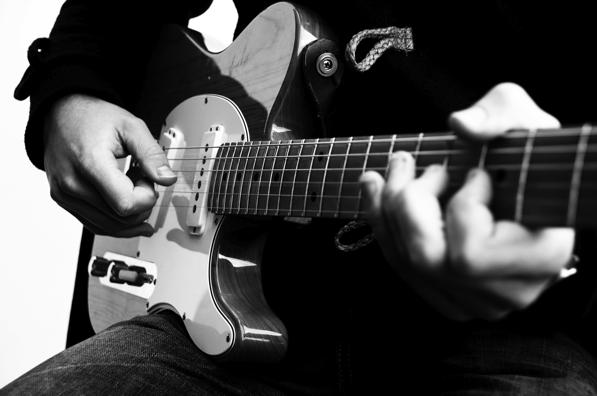Improvisation is one of the most intriguing areas of guitar-playing, especially as it’s one of the few instruments where a little knowledge can go a long way; learn your minor pentatonic box and you’re well on your way to sounding half-decent. Scales are an all-important part of learning to improvise on guitar but what if you want that lyrical, always falling on the right note, melodic kind of sound? How do you go about it? Scales are part of the puzzle but there’s something else you need to consider.
Remember when you first picked up a guitar? Perhaps you can recall working out melodies such as TV themes and other catchy tunes. If you’re anything like me you probably stopped doing that after discovering the minor pentatonic scale, and kind of dismissed it as uncool. It’s somewhat ironic that we naturally start out by working out melodies, yet we soon go to the other extreme of practicing scales and arpeggios in isolation in order to be able to do that very same thing. Melody is a powerful tool to have at your disposal during a solo as there’s less pressure to come up with something equally or more interesting using scales when you step up to wail.
Get Melodic
I remember watching Jaco Pastorius’ REH instructional video at a friend’s house when I was about 18. He probably wanted to distract me from my endless noodling by putting it on, but one thing Jaco says in the video really stuck with me. He was talking about how he approaches learning a tune and he remarks to the interviewer that even though he was the bass player, he always learned the melody. One of the main benefits of learning the melody is that you always know where you are in the tune, and this in turn gives your solo a very pleasing, structured sound as well as giving the audience the impression you know exactly what you’re doing 😉
Once the melody is ingrained in your head, you’re free to play with it and come up with your own embellishments and variations while still sounding like you’re in total control. Check out John Mayer’s version of ‘Ain’t No Sunshine’ below to see just how far this approach can go. You can see him quoting the melody, going outside of it and coming back to resolve it, plus the occasional hat-tip to SRV.
John Mayer employs this approach in a lot of his playing, especially his John Mayer Trio stuff as playing blues in a 3-piece means you need to be conscious of the melody at all times as there’s no second guitarist to guide the audience’s ear.
Lyrical Soloing in 3 Steps
Step 1 – Find a tune you want to solo over which has a strong melody. Learn the melody by ear wherever possible in a comfortable area of the neck; if you want to use John’s version of ‘Ain’t No Sunshine’, it starts on D.
Step 2 – Play through the melody until you can play it without thinking. At this stage resist the temptation to add any embellishments as you need to have the melody deeply ingrained in your ear.
Step 3 – By now you’ve probably noticed some familiar scale patterns appearing around the melody. You can add in notes from those or pretty much any other note that takes your fancy as long as you resolve it to the melody.
Tip: Keep the melody going in your head at all times as this will help you get back to it should you decide to go on a lengthy excursion away from it, or throw in a few scale-based licks and runs.
If you’re stuck in a rut with scales this approach can breathe some much needed life into your soloing as well as giving it that effortless, ‘this guy knows what he’s doing’, sound.



